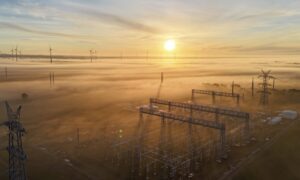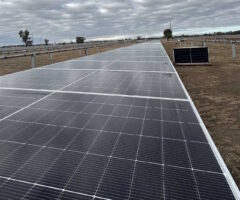Australia’s reliability standards for the main electricity grid have been quietly but dramatically tightened by state and federal energy ministers, in a move that will allow the Australian Energy Market Operator to lock in more reserves for longer periods to help deal with the challenges of intense summer heatwaves and an ageing grid.
The increase in the reliability standard means that Australia’s targeted “unserved energy”, or USE, have been tightened from its current level of 0.002 per cent of the time, which is equivalent to around 11 minutes per person per year, and is already one of the tightest in the world.
The new standard is 0.0006, or just over three minutes per person per year. That means the market operator will be required to deliver sufficient power 99.9994 per cent of the time, up from 99.998 per cent.
It should be noted here that Unserved Energy (not having enough power to meet demand) accounts for just a tiny fraction of all outages experienced by consumers.
Most outages come from network events, such as storms and bushfires and other events that take down poles and wires, or even very large transmission lines and everyday repairs and maintenance.
But the optics and the headlines of not having enough supply are never very good – as experienced in South Australia in February 2017, and in the past week in California –which is one reason why Australia’s standard is so tight.
The push to tighten them has been on the agenda for a while, as Tristan Edis wrote in these pages last year, and comes despite the fact that the reliability panel – appointed to consider such things – recommended against it in 2018, and a consumer survey completed by the energy regulator showed no great appetite for change, or at least of the cost of doing so.
The formal proposal to tighten the reliability standard was made in March, and signed off by the Energy Security Board at the time – but it got little attention given the outbreak of the Covid-19 pandemic in Australia.
The final “interim reliability measures” were made public last Wednesday and the amending legislation from the SA minister is actually dated August 14, (see here) – although the amending legislation uses the section of the National Electricity Law (s90F) that the ESB Review (made publicly available on Friday) recommended not be used.
“I think it’s pretty shocking that the section of the law that was specifically identified as problematic by the ESB review was used to make this change just a week earlier,” says Dylan McConnell of the Climate and Energy College. “It’s particularly galling when you consider that they (COAG -EC ministers) have had the review for weeks.”
The approval on Thursday comes just in time for AEMO to publish its latest Electricity Statement of Opportunities, an annual but previously unremarkable prediction of where investment in new generation might be needed, but which has recently become known as the “blackout report” because of the warnings it has given for the summer season to come, and the headlines that it generates.
Last year, AEMO’s ESOO predicted a breach of the standards (dotted grey line) in last summer in just one state, Victoria (in orange) – mostly due to threat of outages at big coal and gas generators – and no breaches anywhere in the main for the next 10 years.
If it had applied this new standard (now marked in dotted black line) last year then the predictions, particularly in outer years, would have been dire and the headline writers in Murdoch newspapers would likely still be in therapy.
Of course, those predictions are based on what may happen should AEMO – and the market in general – choose to sit on their collective buttocks and do nothing.
The predictions – warnings of blackouts – allow AEMO to go out and contract significant amount of “emergency reserves” – in the form of back-up generators, but mostly in “demand response” where users get paid to not use power at certain times. In effect, AEMO actually needs those gloomy forecasts to call in the reserves in advance.
The new tighter standards, and gloomier forecasts, will allow it to contract even more reserves, and for longer periods (over the next three years) until these interim arrangements are replaced by a re-write of the market rules, due to be in place by 2025.
AEMO is particularly concerned about what it terms “tail risk” events, when everything that could go wrong does go wrong, particularly as intensive heatwaves take their toll on electricity supplies. See California last week.
An ESB paper explaining its position suggests that demand response – where energy users such as smelters, manufacturers or even households aggregated under a “virtual power plant” – are paid to reduced demand when supplies get really tight, such as in the midst of a heatwave or when a coal generator or two trip off in the heat. That costs a lot less than burning more gas or diesel, and is cleaner.
Still, there are fears that there increased reliability standard may add to costs to consumers, who already pay among the highest tariffs in the world, partly because of the “gold plating” of the grid made in response to a previous panic about the threat of blackouts in NSW and Queensland in the early 2000s, as Edis points out, and the assumption that consumers (and not just the Murdoch media) have little tolerance for outages.
McConnell agrees: “Things are going to get expensive,” he says. “And the finger can be squarely pointed at the ESB and the energy ministers.”
The higher standard may also cause an earlier trigger of the retailer reliability obligation, which came into force on July 1. This requires retailers to ensure they have contracted enough “firm” capacity to deal with any potential shortfalls that could be flagged by AEMO.
Interestingly, the higher standards come despite a year-long investigation by the Australian Energy Regulator into the “consumer value of lost energy’, which actually showed little change from 2014, apart from a few big businesses and people in Adelaide, whose tolerance may have been tested by the blackouts and outages of 2016 and 2017.
This, however, may be a clue as to why AEMO and the rest of the regulatory and institutional bodies are so keen to have the standards tighened and access to more reserves. AEMO, in its 20-year blueprint known as the Integrated System Plan, lays out a plan for what it calls the “world’s fastest energy transition”, forced upon the country by the need to replace its ageing and dirty and increasingly costly coal fleet.
The speed of that transition frightens many, particularly those with a vested interest or an ideological bent to slow it down. And AEMO understands that any blackouts that could sheet any blame to the transition to renewables will do exactly that. Which also explains its incredibly cautious approach to grid connections, much to the frustration and cost of many caught up in delays and changes.









